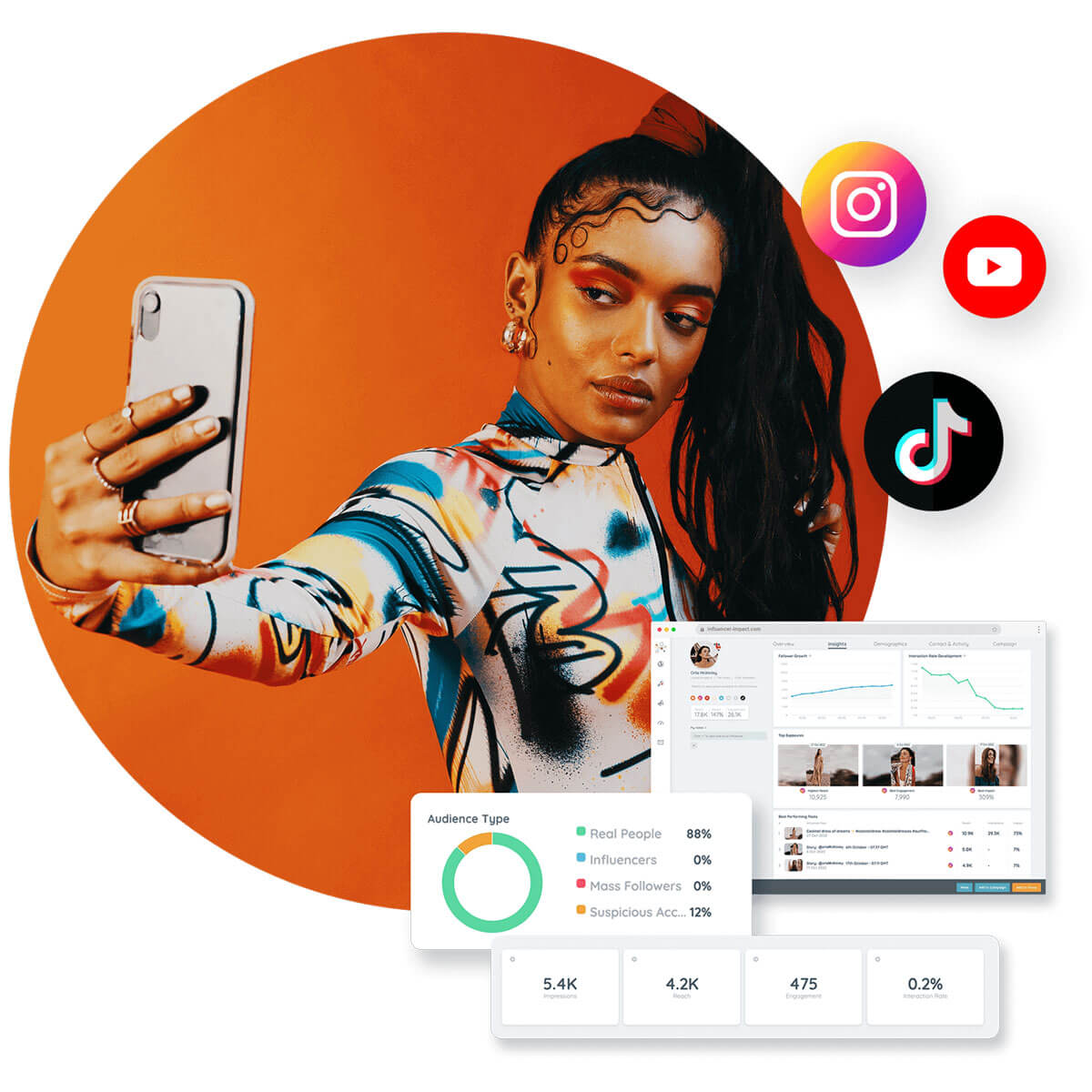2024 Influencer Marketing Strategy Guide What You Need to Know
Influencer marketing has evolved into one of the most effective ways for brands to connect with their target audience in the digital age.

Influencer marketing has evolved into one of the most effective ways for brands to connect with their target audience in the digital age. It leverages the influence of individuals with large followings on social media platforms to promote products, services, or brand messages. As we step into 2024, understanding and implementing a solid influencer marketing strategy is essential for brands looking to boost their online presence, build trust, and drive sales. This guide will walk you through the essentials of influencer marketing, the types of influencers, the steps to create an effective strategy, and common pitfalls to avoid.
What Is Influencer Marketing?
Influencer marketing is a type of social media marketing that involves endorsements and product placements from influencers, individuals, or organizations that have a perceived level of expertise or social influence in their field. Unlike traditional celebrities, influencers are often relatable and authentic, which helps brands reach their target audience in a more personal and engaging way.
The concept hinges on trust: followers believe in the influencer’s recommendations, and this trust is transferred to the brand or product being endorsed. This marketing approach can be highly effective because it feels less like advertising and more like a trusted recommendation from a friend.
Types of Influencers By Size and Reach
Influencers come in various sizes, and understanding the different types can help you select the right fit for your brand. Here’s a breakdown of influencers by their reach:
Nano Influencers (1K - 10K followers): Nano influencers have a small but highly engaged audience. They are usually everyday people who are known for a specific niche. Collaborating with nano influencers can be cost-effective and can provide high engagement rates due to their close-knit communities.
Micro Influencers (10K - 100K followers): Micro influencers have a more significant following than nano influencers but still maintain a personal connection with their audience. They are considered experts in their niche and can drive high engagement rates. Brands often collaborate with micro influencers for authenticity and targeted reach.
Macro Influencers (100K - 1M followers): Macro influencers are usually content creators, bloggers, or vloggers who have a broader audience. They are ideal for reaching a larger audience and are often chosen for brand awareness campaigns. However, they may have lower engagement rates compared to nano and micro influencers.
Mega Influencers (1M+ followers): Mega influencers are typically celebrities or well-known public figures with millions of followers. They can provide extensive reach and are ideal for brands looking to create widespread brand recognition quickly. However, collaborations with mega influencers can be costly and may not always translate to high engagement or sales.
Why Use Influencer Marketing?
Influencer marketing has proven to be an effective strategy for several reasons:
- Builds Trust and Credibility: Influencers are trusted by their followers. When they endorse a product, it often leads to increased trust and credibility for the brand.
- Reaches Targeted Audiences: Influencers have followers who are interested in specific topics. Brands can leverage this to reach a highly targeted audience that is more likely to be interested in their products or services.
- Improves Content Strategy: Collaborating with influencers can provide high-quality content for your brand’s social media channels, often with a fresh and authentic perspective.
- Boosts Brand Awareness and Sales: Influencers can significantly increase brand exposure, leading to higher sales and revenue growth.
- Enhances SEO and Online Presence: Influencer collaborations can help improve your brand’s online presence through backlinks and social media mentions, which can enhance SEO performance.
How to Create an Influencer Marketing Strategy in 5 Steps
Creating an effective influencer marketing strategy involves careful planning and execution. Here are five steps to help you get started:
Define Your Goals and Objectives: Start by setting clear goals for your influencer marketing campaign. Whether you want to increase brand awareness, drive website traffic, generate leads, or boost sales, having defined objectives will guide your strategy.
Identify Your Target Audience: Understanding your target audience is crucial. Identify their demographics, interests, and the platforms they use most. This will help you choose the right influencers who resonate with your audience.
Choose the Right Influencers: Based on your goals and audience, select influencers who align with your brand values and have the right reach and engagement. Use tools like social media analytics, influencer marketing platforms, or simply research manually to find the best fit.
Develop a Content Plan: Work with influencers to create content that aligns with your brand message. Ensure the content is authentic and fits naturally into the influencer’s existing style. Decide on the type of content (posts, stories, videos) and the frequency of posts.
Track and Measure Success: Use metrics like engagement rates, click-through rates, conversions, and ROI to measure the success of your campaign. Adjust your strategy based on these insights to improve future campaigns.
Influencer Marketing Mistakes to Avoid
Influencer marketing can be highly effective, but there are common pitfalls to watch out for:
- Choosing the Wrong Influencers: Collaborating with influencers who do not align with your brand values or have a low engagement rate can harm your brand’s reputation.
- Lack of Clear Goals: Without clear goals, it’s challenging to measure success or ROI. Ensure your objectives are well-defined from the start.
- Ignoring FTC Guidelines: It’s essential to disclose paid partnerships according to FTC guidelines. Failure to do so can lead to legal issues and damage your brand’s credibility.
- Overlooking Engagement Metrics: Focusing solely on follower count can be misleading. Engagement metrics like likes, comments, and shares are more indicative of an influencer’s impact.
How to Track Influencer Marketing Campaigns
Tracking your influencer marketing campaigns is crucial for understanding their effectiveness. Here are some key metrics to monitor:
- Engagement Rate: Measures how actively the influencer’s audience interacts with the content. High engagement rates indicate a more involved audience.
- Reach and Impressions: Reach measures the total number of unique users who saw the content, while impressions count how often the content was displayed. These metrics help assess the campaign’s visibility.
- Conversion Rate: Measures how many people took the desired action (e.g., made a purchase, signed up for a newsletter) after seeing the influencer’s content.
- Return on Investment (ROI): Calculates the profitability of the campaign. Compare the amount spent on the campaign to the revenue generated.
Create a Successful Influencer Marketing Strategy for Your Brand
To create a successful influencer marketing strategy, focus on building genuine relationships with influencers. Avoid one-off collaborations and instead aim for long-term partnerships that foster authenticity and trust. Additionally, keep an eye on trends within the influencer space, such as the growing popularity of video content and emerging platforms like TikTok, to stay ahead of the curve.
Continuously refine your strategy based on performance data and industry trends. By doing so, you’ll be better positioned to create impactful campaigns that resonate with your target audience.
Influencer Marketing FAQs
Q: How do I find the right influencers for my brand?
A: Start by identifying influencers whose content aligns with your brand values and who have an engaged audience. Use influencer marketing platforms, social media searches, or manual research to find potential collaborators.
Q: How much should I budget for influencer marketing?
A: Budgets vary widely depending on the influencer’s reach, engagement, and niche. Nano and micro influencers are generally more affordable, while macro and mega influencers can demand higher fees. It’s essential to align your budget with your campaign goals.
Q: What is the best platform for influencer marketing?
A: The best platform depends on your target audience. Instagram and TikTok are popular for lifestyle and visual content, while YouTube works well for long-form videos and tutorials. LinkedIn is ideal for B2B influencer marketing.
Q: How do I measure the success of an influencer marketing campaign?
A: Success can be measured using metrics like engagement rate, reach, conversions, and ROI. Set specific goals before the campaign to track the relevant KPIs effectively.
Influencer marketing continues to be a powerful tool for brands looking to connect with their audience authentically. By following this guide, you can develop a robust influencer marketing strategy that drives results and helps your brand thrive in 2024.
What's Your Reaction?











.jpg)







.jpg)
.jpg)